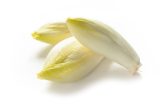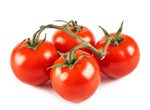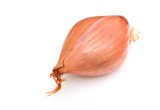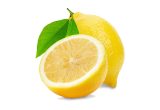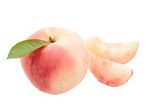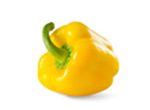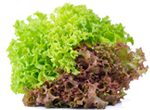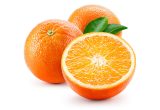Cherry

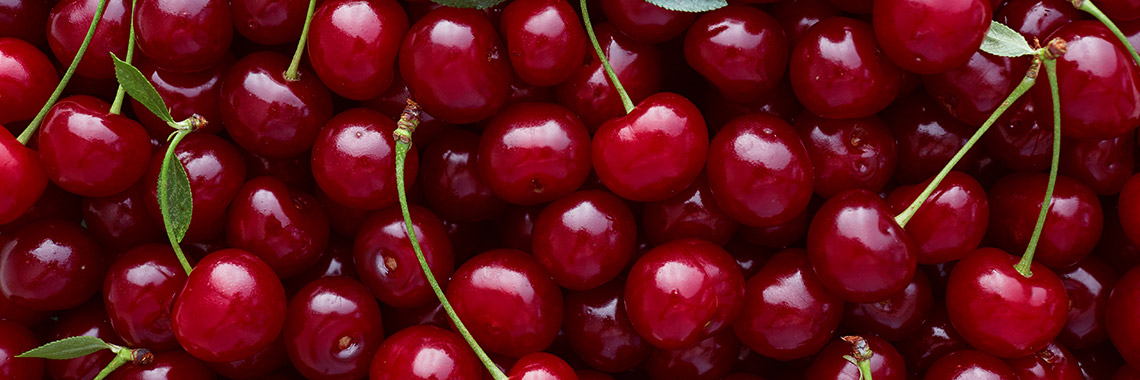
Description
- The cherry tree (Prunus avium L., which produces sweet cherries, or Prunus cerasus L., which produces sour cherries) belongs to the Rosaceae family, which also includes peaches, apricots and plums.
- This tree is native to the Caspian and Black Sea region and northeastern Anatolia and has subsequently spread throughout the world (Oz, 2013).
- The two most consumed species are the wild or sweet cherry and the sour or morello cherry (Wen, 2014).
PHYSICAL AND ORGANOLEPTIC CHARACTERISTICS
- The main characteristics related to the quality of the cherry are its colour, its “sweetness”, its acidity and its firmness.
- The pigments responsible for cherry colour are anthocyanins. Their content varies among cultivars, giving them colours ranging from yellow to dark red (Jin, 2016).
- The “sweetness” of the cherry is reportedly due to its fructose and glucose content, followed by arabinose and sorbitol. As for its acidity, it is thought to be explained by the presence of organic acids, mainly malic acid, followed by ascorbic, tartaric and shikimic acid (Legua, 2017).
- In sour cherry or morello cherry, fructose is reportedly the predominant sugar, followed by glucose, sorbitol and sucrose (Alrgei, 2016).
- The polysaccharide composition of the cherry cell wall may have a significant influence on fruit firmness (Basanta, 2013).
- Thirty-one volatile compounds were isolated from 7 Spanish cultivars (Lory, Burlat, Brooks, Summit, Prime Giant, Van and 57), including acids, alcohols and aldehydes. The six compounds responsible for cherry aroma were reported to be benzaldehyde (22.1%), benzyl alcohol (20.8%), eugenol (9.5%), nonanal (6.9%), trans-2-hexenal (6.8%) and isoamyl butyrate (5.3%) (Legua, 2017).
COMPOSITION CHARACTERISTICS (excluding macronutrients, vitamins and minerals)
- Cherries contain carotenoids, most notably β-carotene and lutein and, to a lesser extent, zeaxanthin (Ferretti, 2010).
- Cherries (sweet or sour) contain a significant quantity of polyphenols (Phenol Explorer). Among them, anthocyanins have multiple properties:
- antioxidant and anti-inflammatory properties that promote recovery from exercise and lower blood pressure (Cook, 2019);
- they may also decrease blood levels of biomarkers related to skeletal muscle breakdown and reduce the risk of cardiometabolic diseases (hypertension and dyslipidemia) (Santos, 2020);
- they may, along with other phenolic compounds, reduce the risk of several degenerative diseases, such as cancers and heart disease. Cherry consumption is even thought to be associated with a reduction in arthritis and pain associated with gout (Legua, 2017)
- with methanol, they are reported to have anticancer properties, especially on prostate cancer, by stimulating apoptosis of cancer cells (Silva, 2019).
FRESH
The following values are approximate and depend on variety, season, ripeness, cultivation conditions, etc. The average cherry provides 55.70 calories (kcal) per 100 g, i.e. 235 kJ. For an average portion of cherries (125 g, i.e. about 18 cherries), this fruit provides 69.62 kcal.
COMPOSITION TABLES
For each nutrient, the tables provide information on the content, minimum and maximum values, as well as the percentage of the Dietary Reference Values (DRVs) per 100 g net of cherries.
MACRONUTRIENTS
| Constituent (g) | Average content |
Min-Max per 100g |
DRV% |
|---|---|---|---|
| Water | 85,70 | 77,90 - 89,60 | - |
| Fibers | 1,60 | 1,10 - 2,40 | - |
| Carbohydrates | 13 | 0 - NC | 5 |
| Sugars | 10 | NC - 12,80 | 11,11 |
| Lipids | < 0,30 | 0 - 0,50 | - |
| Saturated fat | < 0,01 | NC - 0,071 | - |
| Protein | 0,81 | 0,63 - 1,88 | 1,62 |
| Constituent (g) | Amount | Min-Max | DRV% |
|---|---|---|---|
| Water | Ciqual 2020 (valeur issue des analyses Ciqual-Aprifel 2018) | - | - |
| Fibers | Ciqual 2020 (valeur issue des analyses Ciqual-Aprifel 2018) | - | - |
| Carbohydrates | Ciqual 2020 | - | Règlement (UE) N°1169/2011 du parlement Européen et du conseil du 25 octobre 2011 |
| Sugars | Ciqual 2020 (valeur issue des analyses Ciqual-Aprifel 2018) | - | Règlement (UE) N°1169/2011 du parlement Européen et du conseil du 25 octobre 2011 |
| Lipids | Ciqual 2020 (valeur issue des analyses Ciqual-Aprifel 2018) | - | Règlement (UE) N°1169/2011 du parlement Européen et du conseil du 25 octobre 2011 |
| Saturated fat | Ciqual 2020 (valeur issue des analyses Ciqual-Aprifel 2018) | - | Règlement (UE) N°1169/2011 du parlement Européen et du conseil du 25 octobre 2011 |
| Protein | Ciqual 2020 (valeur issue des analyses Ciqual-Aprifel 2018) | - | Règlement (UE) N°1169/2011 du parlement Européen et du conseil du 25 octobre 2011 |
Zoom on carbohydrates
- The energy of the cherry comes mainly from its carbohydrates, up to 13 g per 100 g.
- Its carbohydrate content is above the average content found in fresh fruit: about 11.31 g per 100 g.
- Its carbohydrates are mainly glucose (5.40 g per 100 g), fructose (4.60 g per 100 g) and sorbitol (2.80 g per 100 g).
Zoom on fibres
- Cherries contain an average of 1.60 g of fibre per 100 g, which is lower than the average fibre content of fresh fruit (2.77 g per 100 g).
Zoom on proteins
- The protein content of cherries (0.81 g per 100 g) is lower than the average content of fresh fruit: 0.93 g per 100 g.
Zoom on lipids
- Cherries are fat-free* as they contain less than 0.5 g per 100 g.
Regulation (EC) No 1924/2006 of the European Parliament and of the Council of 20 December 2006 on nutrition and health claims made on foods.
MINERALS AND TRACE ELEMENTS
| Constituent | Average content |
Min-Max per 100g |
DRV% |
|---|---|---|---|
| Calcium (mg) | 9,90 | 9,61 - 37,80 | 1,24 |
| Chloride (mg) | < 20 | - | - |
| Copper (mg) | 0,08 | 0,013 - 0,17 | 8 |
| Iron (mg) | 0,17 | 0,03 - 0,92 | 1,21 |
| Iodine (µg) | < 20 | 0,10 - NC | - |
| Magnesium (mg) | 8,80 | 5,70 - 19 | 2,35 |
| Manganese (mg) | 0,06 | 0,04 - 0,19 | 3 |
| Phosphorus (mg) | 19 | 13 - 37,80 | 2,71 |
| Potassium (mg) | 190 | 129 - 267 | 9,50 |
| Selenium (µg) | < 20 | 0 - NC | - |
| Sodium (mg) | < 5 | 0 - NC | - |
| Zinc (mg) | 0,06 | 0 - 0,67 | 0,60 |
| Constituent | Amount | Min-Max | DRV% |
|---|---|---|---|
| Calcium (mg) | Ciqual 2020 (valeur issue des analyses Ciqual-Aprifel 2018) | - | Règlement (UE) N°1169/2011 du parlement Européen et du conseil du 25 octobre 2011 |
| Chloride (mg) | Ciqual 2020 (valeur issue des analyses Ciqual-Aprifel 2018) | - | Règlement (UE) N°1169/2011 du parlement Européen et du conseil du 25 octobre 2011 |
| Copper (mg) | Ciqual 2020 (valeur issue des analyses Ciqual-Aprifel 2018) | - | Règlement (UE) N°1169/2011 du parlement Européen et du conseil du 25 octobre 2011 |
| Iron (mg) | Ciqual 2020 (valeur issue des analyses Ciqual-Aprifel 2018) | - | Règlement (UE) N°1169/2011 du parlement Européen et du conseil du 25 octobre 2011 |
| Iodine (µg) | Ciqual 2020 (valeur issue des analyses Ciqual-Aprifel 2018) | - | Règlement (UE) N°1169/2011 du parlement Européen et du conseil du 25 octobre 2011 |
| Magnesium (mg) | Ciqual 2020 (valeur issue des analyses Ciqual-Aprifel 2018) | - | Règlement (UE) N°1169/2011 du parlement Européen et du conseil du 25 octobre 2011 |
| Manganese (mg) | Ciqual 2020 (valeur issue des analyses Ciqual-Aprifel 2018) | - | Règlement (UE) N°1169/2011 du parlement Européen et du conseil du 25 octobre 2011 |
| Phosphorus (mg) | Ciqual 2020 (valeur issue des analyses Ciqual-Aprifel 2018) | - | Règlement (UE) N°1169/2011 du parlement Européen et du conseil du 25 octobre 2011 |
| Potassium (mg) | Ciqual 2020 (valeur issue des analyses Ciqual-Aprifel 2018) | - | Règlement (UE) N°1169/2011 du parlement Européen et du conseil du 25 octobre 2011 |
| Selenium (µg) | Ciqual 2020 (valeur issue des analyses Ciqual-Aprifel 2018) | - | Règlement (UE) N°1169/2011 du parlement Européen et du conseil du 25 octobre 2011 |
| Sodium (mg) | Ciqual 2020 (valeur issue des analyses Ciqual-Aprifel 2018) | - | - |
| Zinc (mg) | Ciqual 2020 (valeur issue des analyses Ciqual-Aprifel 2018) | - | Règlement (UE) N°1169/2011 du parlement Européen et du conseil du 25 octobre 2011 |
Zoom on minerals and trace elements
- The two minerals and trace elements best represented in cherries are:
- potassium with a content equivalent to 9.50% of DRVs, i.e. 180 mg per 100 g;
- and copper with a content representing 8% of DRVs, i.e. 0.08 mg per 100 g.
- The other minerals and trace elements are present in quantities representing less than 4% of DRVs.
VITAMINS
| Constituent | Average content |
Min-Max per 100g |
DRV% |
|---|---|---|---|
| Provitamin A Beta-carotene (µg) | 242 | 25 - NC | - |
| Vitamin A equivalent (µg) | 40,33 | 4,17 - NC | 5,04 |
| Vitamin B1 (mg) | < 0,015 | NC - 0,035 | - |
| Vitamin B2 (mg) | 0,012 | NC - 0,05 | 0,86 |
| Vitamin B3 (mg) | < 0,10 | NC - 0,24 | - |
| Vitamin B5 (mg) | 0,14 | NC - 0,26 | 2,33 |
| Vitamin B6 (mg) | 0,04 | 0,031 - 0,057 | 2,86 |
| Vitamin B9 (µg) | 6,75 | 3 - 9,60 | 3,38 |
| Vitamin C (mg) | 4,09 | 3 - 20 | 5,11 |
| Vitamin E (mg) | < 0,08 | 0,06 - 0,20 | - |
| Vitamin K1 (µg) | < 0,80 | NC - 2,70 | - |
| Constituent | Amount | Min-Max | DRV% |
|---|---|---|---|
| Provitamin A Beta-carotene (µg) | Ciqual 2020 (valeur issue des analyses Ciqual-Aprifel 2018) | - | - |
| Vitamin A equivalent (µg) | Calcul à partir de la valeur Provitamine A Béta-carotène* | - | Règlement (UE) N°1169/2011 du parlement Européen et du conseil du 25 octobre 2011 |
| Vitamin B1 (mg) | Ciqual 2020 (valeur issue des analyses Ciqual-Aprifel 2018) | - | Règlement (UE) N°1169/2011 du parlement Européen et du conseil du 25 octobre 2011 |
| Vitamin B2 (mg) | Ciqual 2020 (valeur issue des analyses Ciqual-Aprifel 2018) | - | Règlement (UE) N°1169/2011 du parlement Européen et du conseil du 25 octobre 2011 |
| Vitamin B3 (mg) | Ciqual 2020 (valeur issue des analyses Ciqual-Aprifel 2018) | - | Règlement (UE) N°1169/2011 du parlement Européen et du conseil du 25 octobre 2011 |
| Vitamin B5 (mg) | Ciqual 2020 (valeur issue des analyses Ciqual-Aprifel 2018) | - | Règlement (UE) N°1169/2011 du parlement Européen et du conseil du 25 octobre 2011 |
| Vitamin B6 (mg) | Ciqual 2020 (valeur issue des analyses Ciqual-Aprifel 2018) | - | Règlement (UE) N°1169/2011 du parlement Européen et du conseil du 25 octobre 2011 |
| Vitamin B9 (µg) | Ciqual 2020 (valeur issue des analyses Ciqual-Aprifel 2018) | - | Règlement (UE) N°1169/2011 du parlement Européen et du conseil du 25 octobre 2011 |
| Vitamin C (mg) | Ciqual 2020 (valeur issue des analyses Ciqual-Aprifel 2018) | - | Règlement (UE) N°1169/2011 du parlement Européen et du conseil du 25 octobre 2011 |
| Vitamin E (mg) | Ciqual 2020 | - | Règlement (UE) N°1169/2011 du parlement Européen et du conseil du 25 octobre 2011 |
| Vitamin K1 (µg) | Ciqual 2020 (valeur issue des analyses Ciqual-Aprifel 2018) | - | Règlement (UE) N°1169/2011 du parlement Européen et du conseil du 25 octobre 2011 |
Zoom on vitamins
- The two vitamins best represented in cherries are:
- vitamin C with a content representing 5.11% of DRVs, i.e. 4.09 mg per 100 g, and;
- vitamin A with a content representing 5.04% of DRVs, i.e. 4.33 µg per 100 g.
- The other vitamins are present in quantities representing less than 4% of DRVs.
Calculation made: Beta-Carotene / 6 + retinol
POLYPHENOLS
| Constituent (mg) | Average content |
Min-Max per 100mg |
|---|---|---|
| Flavonoids (mg) | 62,76 | - |
| of which Flavonols (mg) | 2,42 | - |
| of which Flavanols (mg) | 26,68 | - |
| of which Anthocyanins (mg) | 33,66 | - |
| Phenolic Acids (mg) | 52,21 | - |
| of which Hydroxycinnamic acids (mg) | 52,21 | - |
| Total polyphenols | 114,97 | - |
| Constituent (mg) | Amount | Min-Max |
|---|---|---|
| Flavonoids | Etude CTIFL-Aprifel 2017-2018 Méthode utilisée : Chromatographie | - |
| of which Flavonols | Etude CTIFL-Aprifel 2017-2018 Méthode utilisée : Chromatographie | - |
| of which Flavanols | Etude CTIFL-Aprifel 2017-2018 Méthode utilisée : Chromatographie | - |
| of which Anthocyanins | Etude CTIFL-Aprifel 2017-2018 Méthode utilisée : Chromatographie | - |
| Phenolic Acids | Etude CTIFL-Aprifel 2017-2018 Méthode utilisée : Chromatographie | - |
| of which Hydroxycinnamic acids | Etude CTIFL-Aprifel 2017-2018 Méthode utilisée : Chromatographie | - |
| Total polyphenols | Etude CTIFL-Aprifel 2017-2018 Méthode utilisée : Chromatographie | - |
Zoom on polyphenols
- Polyphenols are substances with an antioxidant effect.
Cherries contain a notable quantity of polyphenols made up of 55% of flavonoids, and in particular anthocyanins, and 45% of phenolic acids, in the form of hydroxycinnamic acids.
Nutrition and health claims
According to the definitions of nutrition claims as set out in Regulation (EC) No 1924/2006 on nutrition and health claims, and in view of the composition of cherries, the following claims may be used:
NUTRITION CLAIMS OF CHERRIES
- Fat-free (100 g of cherries contain less than 0.5 g of fat)
References
- Agence nationale de sécurité sanitaire de l’alimentation, de l’environnement et du travail. Table de composition nutritionnelle des aliments Ciqual 2020. Consultée le 10/08/2020 depuis le site internet Ciqual https://ciqual.anses.fr/
- Alrgei HOS, Dabić DČ, Natić MM, Rakonjac VS, Milojković‐Opsenica D, Tešić ŽL, et al. Chemical profile of major taste- and health-related compounds of Oblačinska sour cherry. J Sci Food Agric. 2016;96(4): 1241–51.
- Basanta MF, de Escalada Plá MF, Stortz CA, Rojas AM. Chemical and functional properties of cell wall polymers from two cherry varieties at two developmental stages. Carbohydr Polym. 2013 ;92(1):830-41.
Cook MD, Willems MET. Dietary Anthocyanins: A Review of the Exercise Performance Effects and Related Physiological Responses. Int J Sport Nutr Exerc Metab. 2019;29(3): 322–30. - Ferretti G, Bacchetti T, Belleggia A, Neri D. Cherry antioxidants: from farm to table. Molecules. 201012;15:6993-7005.
- Jin W, Wang H, Wang J, Yang Y, Zhang X, Yan G, et al. The R2R3 MYB transcription factor PavMYB10.1 involves in anthocyanin biosynthesis and determines fruit skin colour in sweet cherry (Prunus avium L.). – PubMed – NCBI. Plant Biotechnol J. 2016;14(11): 2120–33.
- Legua P, Domenech A, Martínez JJ, Sánchez-Rodríguez. L, Hernández F, Carbonell-Barrachina AA, et al. Bioactive and Volatile Compounds in Sweet Cherry Cultivars. J Food Nutr Res. 2017;5(11): 844–51.
- Öz MH, Vurgun H, Bakir M, Büyük İ, Yüksel C, Ünlü HM, Çukadar K, Karadoğan B, Köse Ö, Ergül A. Molecular analysis of East Anatolian traditional plum and cherry accessions using SSR markers. Genet Mol Res. 20137;12(4):5310-20.
- Règlement (CE) N° 1924/2006 du Parlement européen et du Conseil du 20 décembre 2006 concernant les allégations nutritionnelles et de santé portant sur les denrées alimentaires.
- Règlement (UE) N°432/2012 de la Commission du 16 mai 2012 établissant une liste des allégations de santé autorisées portant sur les denrées alimentaires, autres que celles faisant référence à la réduction du risque de maladie ainsi qu’au développement et à la santé infantiles.
- Règlement (UE) n°1169/2011 du Parlement européen et du Conseil du 25 octobre 2011 concernant l’information des consommateurs sur les denrées alimentaires, modifiant les règlements (CE) n°1924/2006 et (CE) n°1925/2006 du Parlement européen et de Conseil et abrogeant la directive 87/250/CEE de la Commission, la directive 90/496/CEE du Conseil, la directive 1999/10/CE de la Commission, la directive 200/13/CE du Parlement européen et du Conseil, les directives 2002/67/CE et 2008/5/CE de la Commission et le règlement (CE) n°608/2004 de la Commission.
- Santos HO, Genario R, Gomes GK, Schoenfeld BJ. Cherry intake as a dietary strategy in sport and diseases: a review of clinical applicability and mechanisms of action. Crit Rev Food Sci Nutr. 2020; 1–14.
- Silva GR, Vaz CV, Catalão B, Ferreira S, Cardoso HJ, Duarte AP, et al. Sweet Cherry Extract Targets the Hallmarks of Cancer in Prostate Cells: Diminished Viability, Increased Apoptosis and Suppressed Glycolytic Metabolism. Nutr Cancer. 2019; 1–15.
- Wen YQ, He F, Zhu BQ, Lan YB, Pan QH, Li CY, Reeves MJ, Wang J. Free and glycosidically bound aroma compounds in cherry (Prunus avium L.).




